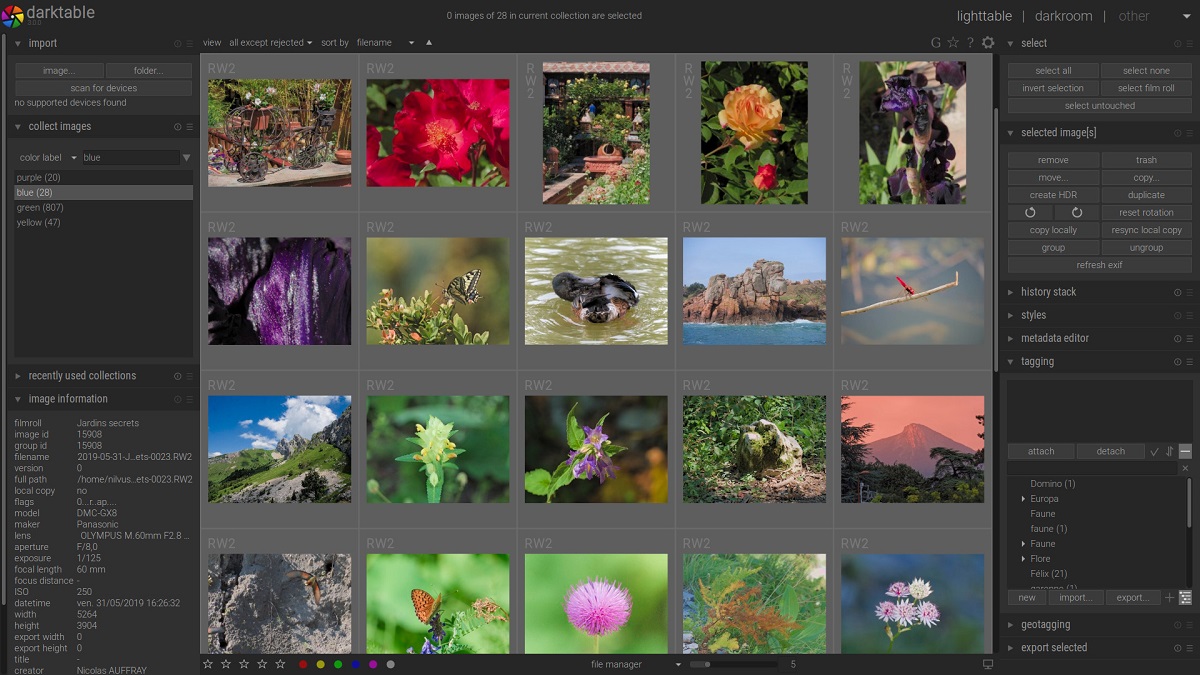
The release of the new version of Darktable 4.0, in which in addition to the new functions and improvements, the redesign of the user interface stands out, new modules have been added, among other things.
For those who are unfamiliar with Darktable, you should know that this acts as a free alternative to Adobe Lightroom and specializes in the non-destructive manipulation of raw images.
Darktable provides a large selection of modules to perform all kinds of photo processing operations, allows you to maintain a source photo base, visually browse existing images and, if necessary, perform distortion correction and quality enhancement operations, while maintaining the original image and the entire history of operations with it. The project code is distributed under the GPLv3 license. Binaries are expected in the near future.
Main news in Darktable 4.0
In this new versionThe user interface has been completely redesigned, a review has been made in colors, alignment of elements and icons, in addition to changing the design of the folding sections. To reduce the clutter of elements in the interface, new collapsible sections “RGB Combination”, “Exposure” and “Color Calibration” have been added. The bullet interface is divided into two sections. Added support for IPAPGothic font. Redesigned tooltip screen. The theme is Elegant Gray by default.
Another novelty that stands out is that added a new color and exposure calibration module to match any object in an image to an arbitrarily selected color, which can be used, for example, to adjust white balance for non-gray objects or to achieve color consistency across different images.
The "Film RGB Tone Curve" module ("filmic") used for color matching has been redesigned to produce more vivid colors, such as blue skies, by matching the color space used while maintaining the overall color gamut.A
In addition to this, the completely revised settings related to performance, optimizations and use of OpenCL, in addition to new optimizations added, the ability to separately configure OpenCL parameters for each device was provided.
A controlled Laplace mode has been implemented to restore overexposed areas of an image, allowing you to extract information about lost details from unclipped RGB channels and use this information to restore clipped channels, taking into account color gradients from neighboring image areas.
Of the other changes that stand out from this new version:
- He proposed his own uniform color space: Uniform Color Space 2022, created with an eye toward studying information perception functions to improve saturation control while maintaining the artistic qualities of photography.
- The color picker provides color suggestions for color names (necessary for people who have problems with color perception).
- A new "Collection Filters" module has been added, which simplifies the analysis of information in large collections and allows you to set arbitrary filters and sorting methods. You can filter images by parameters like color marks, text, time, exposure, ISO level, etc.
- Added support for exporting in EXR format with color representation as 16-bit floating point values.
- The module for viewing recently used collections has been replaced by the “History” button in the regular interface for managing collections.
- Improved support for monochrome images and photos taken with cameras with a color filter removed.
Finally if you want to know more about it of this new version of Darktable, you can check the original announcement In the following link.
How to install Darktable on Ubuntu and derivatives?
For those who are interested in being able to install this new version, they should know that currently the precompiled binaries for Ubuntu and its derivatives are not yet available, although it will be a matter of days before they are available in the repositories.
To install from the repositories, just type:
sudo apt-get install darktable
While for those who already want to try this new version, they can compile the application in the following way. First we get the source code with:
git clone https://github.com/darktable-org/darktable.git cd darktable git submodule init git submodule update
And we proceed to compile and install with:
./build.sh --prefix /opt/darktable --build-type Release